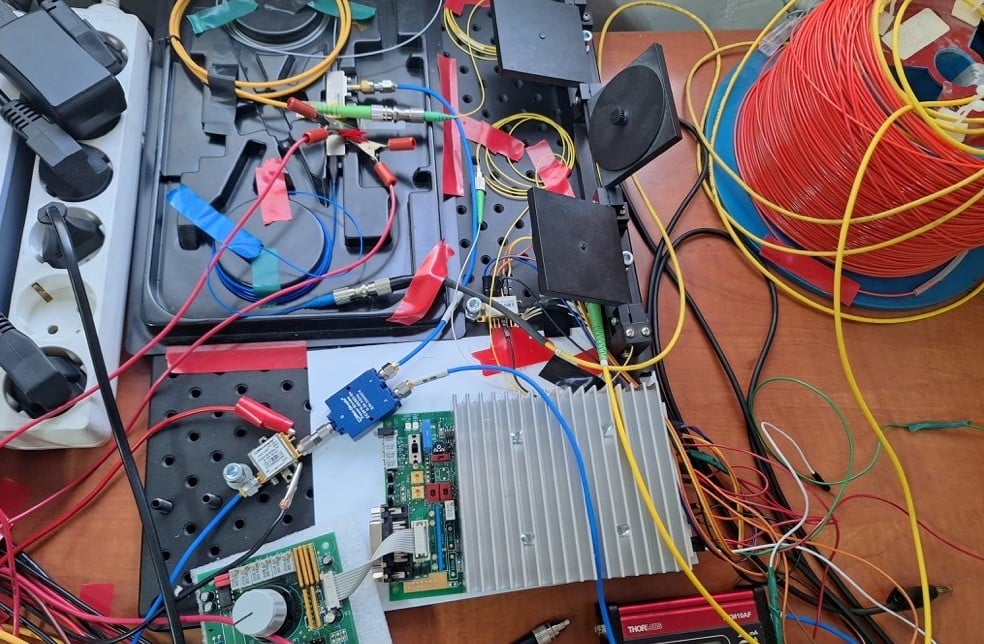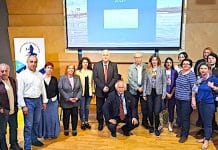 The colossal fibre-optic network that has been installed over the last thirty years covers most of the planet, acting as the backbone for internet technologies. A very significant investment, the existing network could be used as a giant sensor, offering the potential to detect and study phenomena in places where conventional sensors cannot be placed. As such, it has attracted the interest of most technological giants (Google, Huawei, etc.). The “ECSTATIC” research project aims to exploit the huge installed network of optical fibres as a potential sensor network.
The colossal fibre-optic network that has been installed over the last thirty years covers most of the planet, acting as the backbone for internet technologies. A very significant investment, the existing network could be used as a giant sensor, offering the potential to detect and study phenomena in places where conventional sensors cannot be placed. As such, it has attracted the interest of most technological giants (Google, Huawei, etc.). The “ECSTATIC” research project aims to exploit the huge installed network of optical fibres as a potential sensor network.
 “ECSTATIC” will develop new sensing approaches based on interferometry, distributed acoustic sensing and polarization state. New capabilities for sensitivity, range and accurate detection will be defined, offering a range of solutions for different use cases, while ensuring the coexistence of the detection signal with the wavelengths carrying communication traffic. New dual-microcombs source technologies will improve the range, spatial resolution and bandwidth compared to previously prevalent techniques such as distributed acoustic sensors. To address the limited storage and processing capabilities of the huge amount of data that will be generated by such activities,
“ECSTATIC” will develop new sensing approaches based on interferometry, distributed acoustic sensing and polarization state. New capabilities for sensitivity, range and accurate detection will be defined, offering a range of solutions for different use cases, while ensuring the coexistence of the detection signal with the wavelengths carrying communication traffic. New dual-microcombs source technologies will improve the range, spatial resolution and bandwidth compared to previously prevalent techniques such as distributed acoustic sensors. To address the limited storage and processing capabilities of the huge amount of data that will be generated by such activities,  new digital signal processing techniques will be developed using machine learning algorithms to extract and compress the information. These solutions will be based on algorithms of relatively low complexity, implementing real-time event detection and classification. All the proposed sensor technologies, as well as the data processing algorithms, will be tested in real submarine and metropolitan networks to validate their capabilities for early warning of seismic events, fault prediction and ensuring network integrity.
new digital signal processing techniques will be developed using machine learning algorithms to extract and compress the information. These solutions will be based on algorithms of relatively low complexity, implementing real-time event detection and classification. All the proposed sensor technologies, as well as the data processing algorithms, will be tested in real submarine and metropolitan networks to validate their capabilities for early warning of seismic events, fault prediction and ensuring network integrity.
The University of West Attica participates with the Parallel and Distributed Systems and Networks Laboratory (PDSN) under the supervision of Professor Antonis Bogris and will contribute to the implementation and further improvement of the microwave frequency fibre interferometry system it has developed, as well as to the data processing using neuromorphic and machine learning algorithms. The University of West Attica is leading the WP3 work package on data processing.
Project Τitle: ECSTATIC (Engineering Combined Sensing And Telecommunications Architectures For Tectonic And Infrastracture Characterisation)
Project Duration: 1/2/2025-31/7/2028
Project URL: https://ecstatic-project.eu/
Project Framework & Funding: This project is funded by the European Committee with over 4 million euros in the HORIZON-CL4-2024-DIGITAL-EMERGING-01 framework.
Scientific coordinator (UNIWA): Adonis Bogris, Professor
Consortium – Partners:
|
Aston University (AU) |
UK |
|
University of Padova (UNIPD) |
IT |
|
University of L’Aquila (UNIVAQ) |
IT |
|
Chalmers University of Technology (CTU) |
SE |
|
Coriant R&D GmbH (INF-G) |
DE |
|
Enlightra SARL (ELA) |
CH |
|
University of Alcalá (UAH) |
ES |
|
University of West Attica (UWA) |
EL |
|
Sparkle (SPARKLE) |
IT |
|
Universitat Jaume I (UJI) |
ES |
|
National Observatory of Athens (NOA) |
EL |
|
Hellenic Telecommunications Organization S.A. (OTE) |
EL |
|
Network Rail (NR) |
UK |
|
Modus Research and Innovation (MOD) |
UK |
Research Publications / Results / Patents
[1] Bogris, Adonis, Nikas, T., Simos, C. et al. Sensitive seismic sensors based on microwave frequency fiber interferometry in commercially deployed cables. Sci Rep 12, 14000 (2022). https://doi.org/10.1038/s41598-022-18130-x
[2] Andreas Fichtner, Adonis Bogris, et.al “Sensitivity kernels for transmission fibre optics”, Geophysical Journal International, Volume 231, Issue 2, November 2022, Pages 1040–1044, https://doi.org/10.1093/gji/ggac238
[3] K. Lentas, D. Bowden, N.S. Melis, A. Fichtner, M. Koroni, K. Smolinski, A. Bogris, T. Nikas, C. Simos, I. Simos, Earthquake location based on Distributed Acoustic Sensing (DAS) as a seismic array, Physics of the Earth and Planetary Interiors, Volume 344, 2023, 107109, ISSN 0031-9201, https://doi.org/10.1016/j.pepi.2023.107109.












